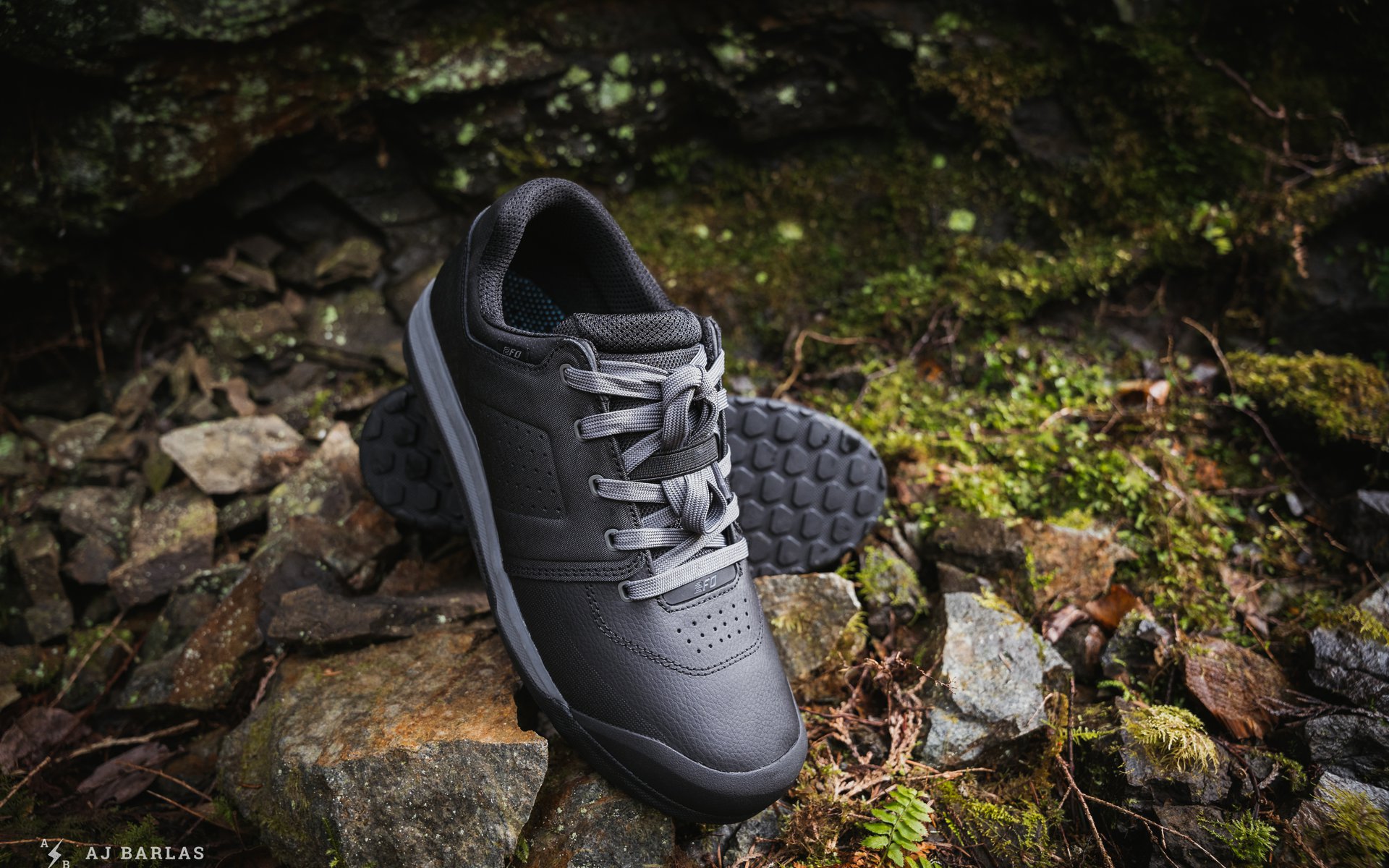
First Impressions
Specialized's New 2FO DH Flat & Clip Shoes
The last decade has seen a steady increase in footwear models for flat pedal riders. Few, if any, have reached the level of grip available from the Stealth rubber that graces the sole of FiveTen shoes. That’s not necessarily a bad thing, with riders holding different preferences when it comes to grip vs some slip, but it is something many of us benchmark against.
But many riders still prefer a shoe with loads of grip on tap and their options have been limited. I’m one of those riders and every shoe I’ve ridden has been compared to the grip of the Stealth Rubber compound. It's not uncommon to see a comment that reads along the lines of; ‘why is it so hard for someone else to make a rubber like FiveTen?,’ beneath a shoe review either. Some flat pedal shoes have come close but nothing has quite matched up, until now.
Specialized’s latest rubber compound, SlipNot 3.0, delivers an experience similar to Stealth Rubber. How exactly did Specialized achieve the elusive grip and why did it take so long?
Highlights
- SlipNot ST (3.0) rubber sole
- Cushioned EVA foam midsole with shank layer for impact absorption and stability
- Reinforced upper for protection and foothold
- Leather and textile upper with added protection
- Xpel™ hydrophobic mesh construction
- Body Geometry
- Sizing (EU): 36, 37, 38, 38.5, 39, 39.5. 40, 40.5, 41.5, 42, 42.5, 43, 43.5, 44, 44.5, 45, 45.5, 46, 46.5, 47, 48, 49
- Colours: Black/Grey and Grey (flat) / Black/Red and Grey (clip)
- Weight: 448g/shoe (Size 44.5 EU/11 US flat shoe tested)
- MSRP: 160 USD (flat) / 170 USD (clip)
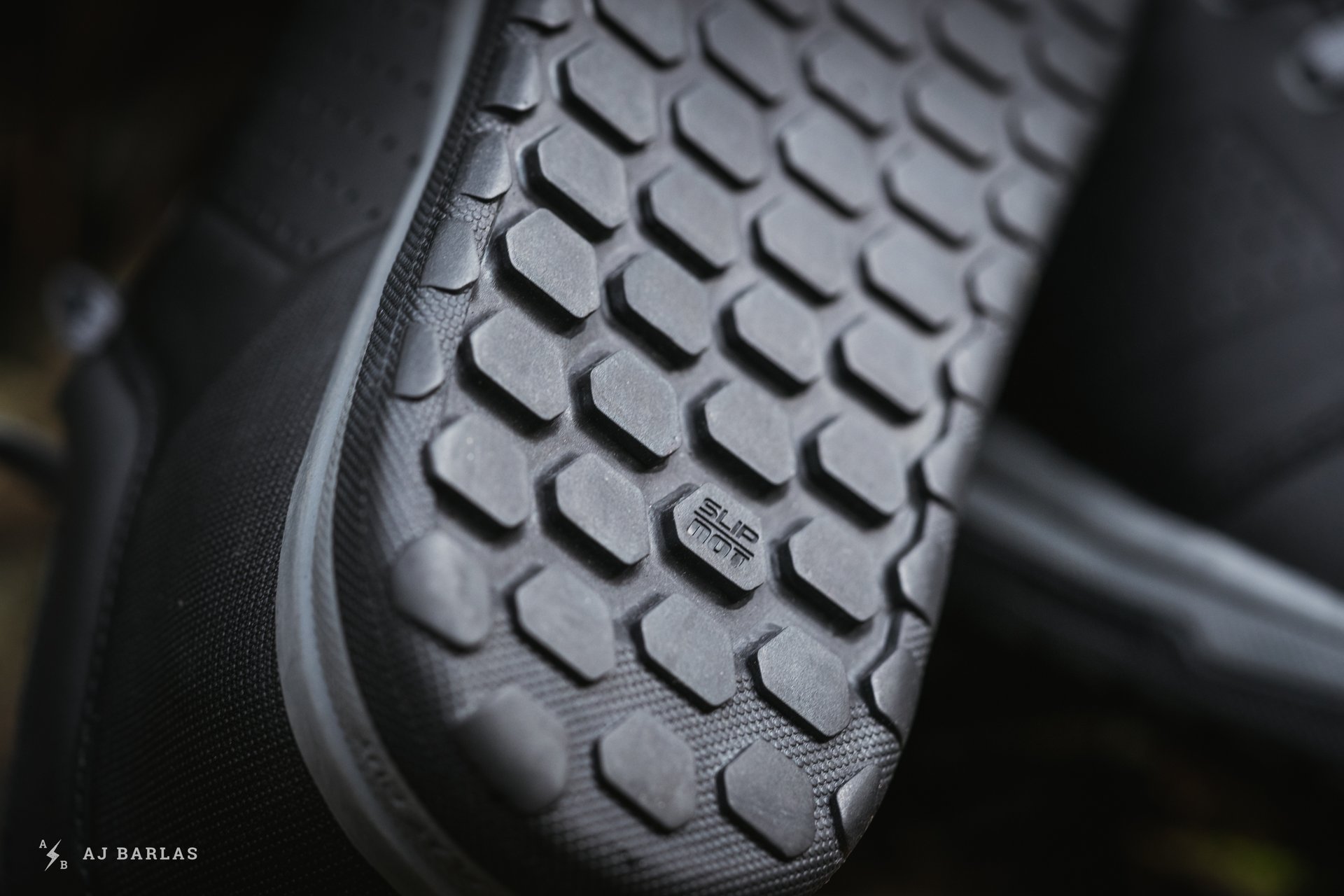
Specialized's SlipNot sole is in its third iteration for the flat pedal shoes and much has changed.
SlipNot ST (3.0) and the Battle For Grip
As it turns out, it really isn’t easy to produce a grippy rubber sole for mountain bike footwear. I asked Specialized Footwear Project Manager, Stephen Quay, what makes it so difficult and whether that was their goal.
Stephen noted that most rubber chemists aim to produce really durable traction rubber, similar to what's found on outdoor hiking shoes, or a resilient, efficient rubber, as found in tires. After much research and different approaches to achieving grip in their earlier shoes, Specialized knew they wanted a rubber with very little rebound – essentially a dead rubber. This style of rubber isn't common and Stephen said finding experts able to achieve this was tricky. But he did confirm that maximum grip was Specialized's goal for their flat pedal shoes, from the day dot.
They approached this differently with their outgoing 2FO shoe, the 2.0. For that shoe, the team used high-tech mapping software to monitor what happened to the foot over a section of trail. The section offered a variety of situations and they had Dylan (Dunkerton) and Curtis (Robinson) of the Coastal Crew, test repeatedly and provide feedback. Specialized's thought for the 2.0 was to make the sole soft, and coat it with a soft, low tensile, high elongation rubber; something closer to an elastic band.
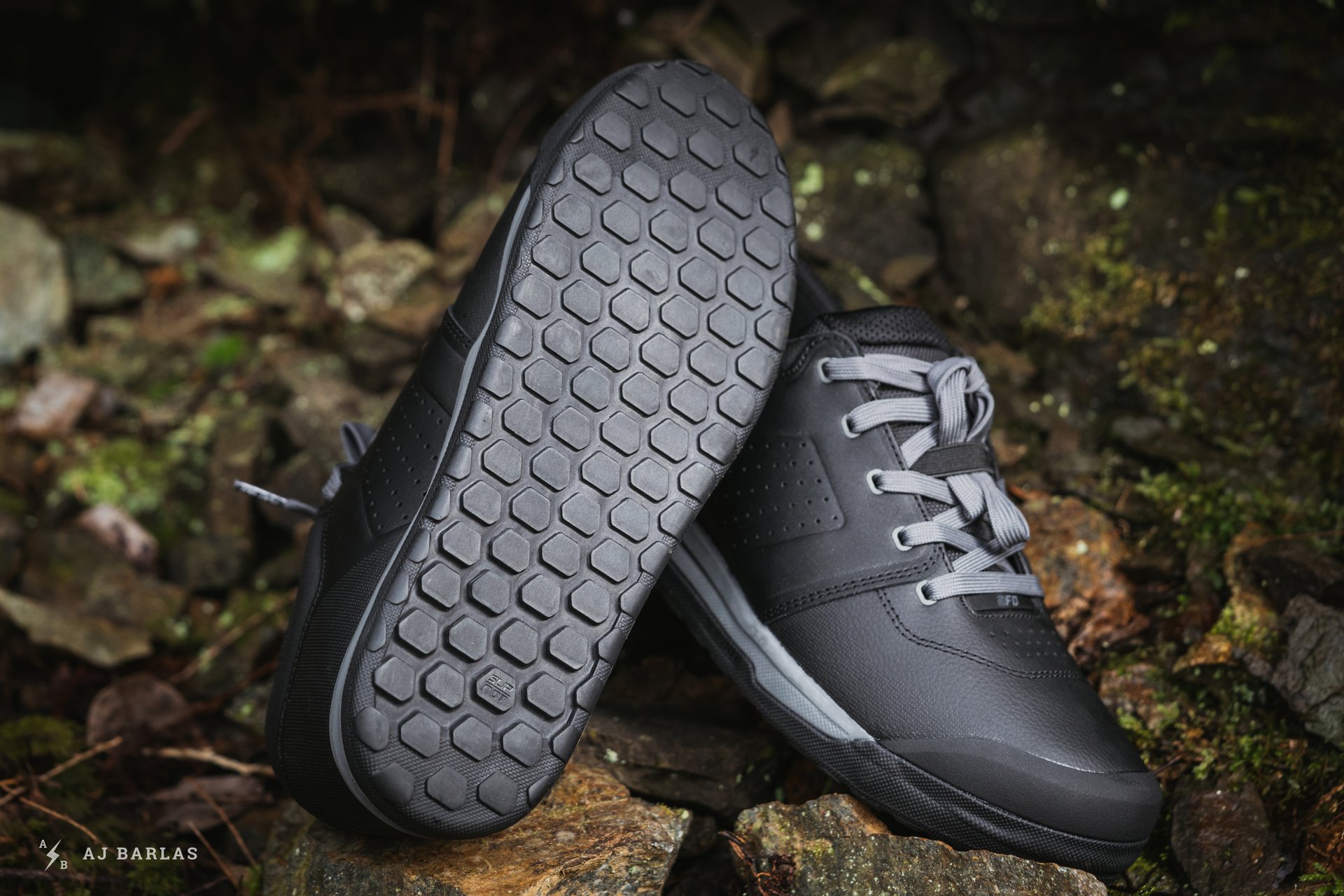
Specialized confirmed they've always wanted a rubber sole that provided maximum grip for flat pedal riders. Until now they were unable to achieve this.
The 2.0 provided grip thanks to the easily deforming base which allowed the pins of the pedal to penetrate effortlessly. However, this soft material produced a lacklustre hold on the pins once they were embedded into the shoe’s sole, allowing them to move while loading on the pedal. They also provided little support. Despite their lack of all-out grip, I found them to be an improvement over the original 2FO, which had a firm sole and rubber.
To achieve the most grip possible, Specialized began working on a midsole that was firmer, to provide an improved response but also force the rubber and the pedal pins to engage. With the help of some external rubber chemists, the rubber was changed to a durometer similar to the original 2FO flat but slower to rebound. Tensile strength is higher and the elongation percentage lower than 2.0.
That’s a fair bit of science, and there’s a podcast with Stephen that we’ll release very soon for those interested to learn more. In short, the higher tensile strength of the rubber holds the pin firmly in place while the right amount of elongation, or stretch, allows the pin to engage well. Add the slow rebound and once in place, the pin has less chance of bouncing out.
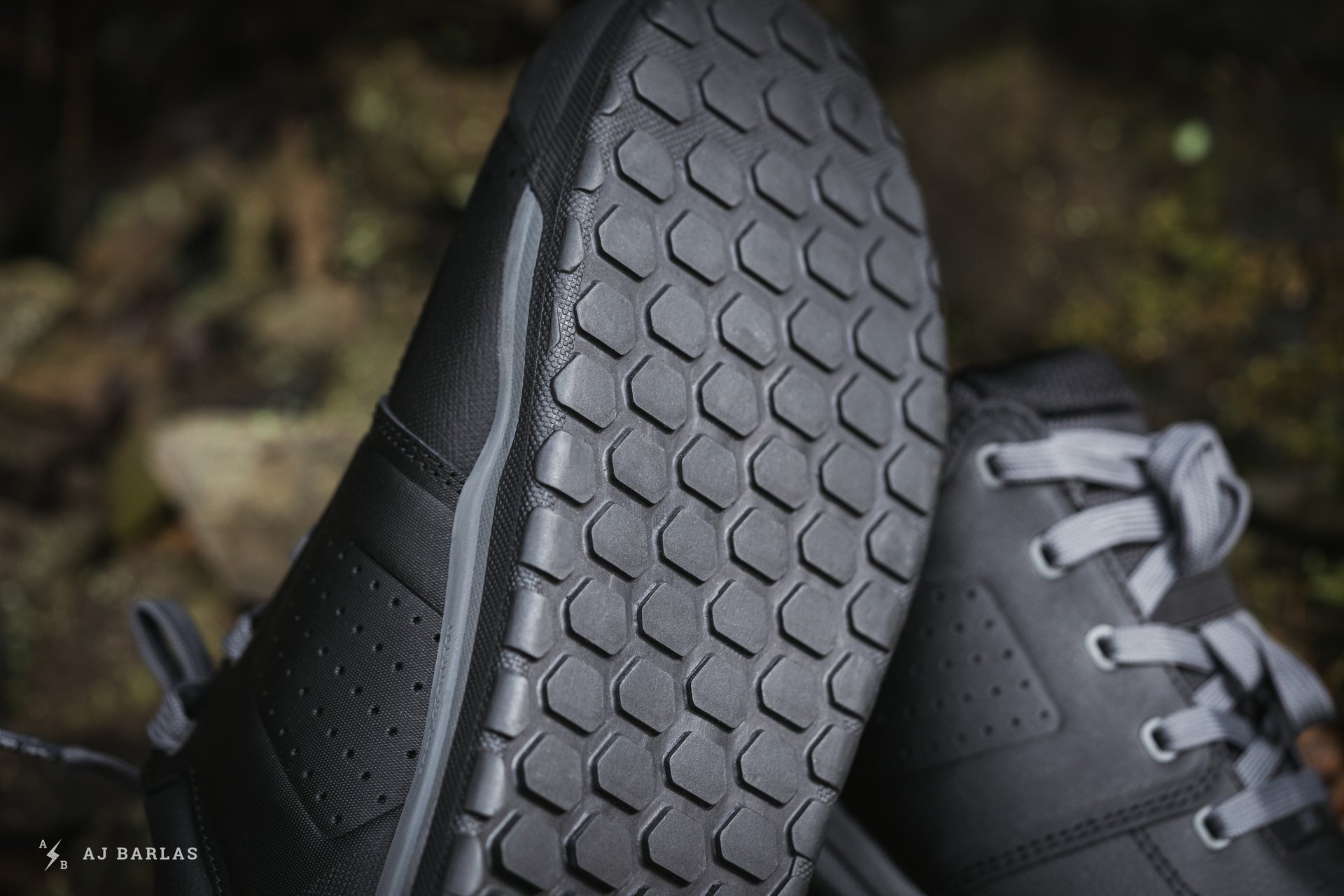
Consulting with rubber chemists, Specialized sought a rubber compound that was essentially dead. Little rebound combined with improved tensile strength and stretch make SlipNot 3.0 the grippiest rubber I've ridden outside of FiveTen.
The important point is that it works. I’ve only had the chance to get a few rides in the new 2FO DH flat shoe but they immediately provided a strong hold and I haven’t had any situations where a foot has shaken loose. They’ve held strong through rough sections of trail riddled with square edges as well as high-speed situations where airing into more chop and rocks has done nothing to unsettle them.
At this time of year in Squamish, conditions are generally cold and my rides have been in temperatures ranging from 6–10 degrees Celsius. It’s been damp but not wet during the first rides with the 2FO DH but there have been no problems to note when it comes to grip.
Compared to FiveTen's Impact Pro, the grip has been at least equal and while it’s early days, I’d say the rubber latches on more instantly, which is good for keeping the foot in place when slightly unweighting but can make repositioning tricky.
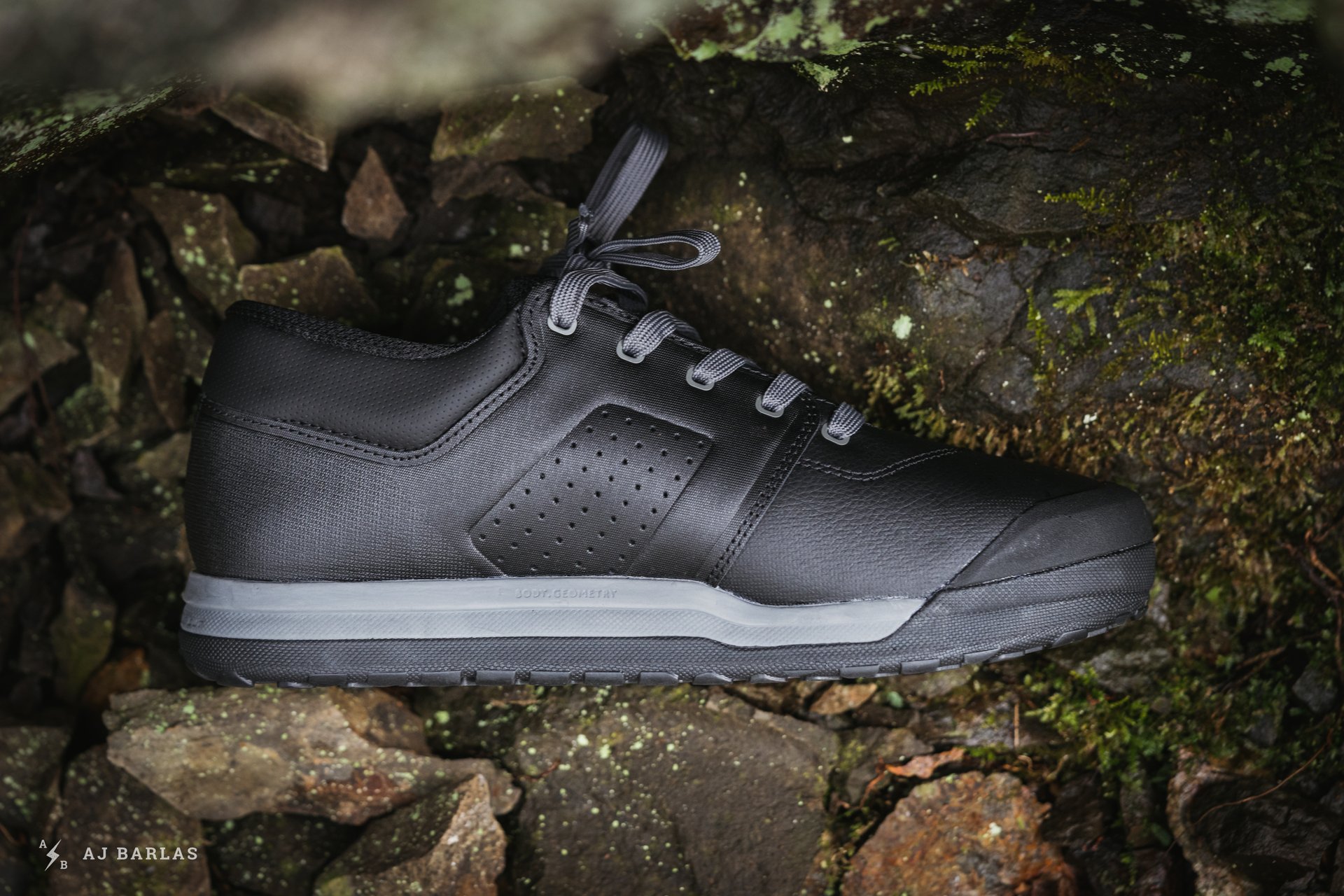
It turns out the midsole is just as important as the outer in terms of grip and response. A nylon shank that runs three-quarters of the length provides additional support.
The Midsole Matters Too
Anyone who rode in the previous 2FO shoe knows how soft the sole was. The foam resembled the goo of a marshmallow and while at the time Specialized felt allowing the pin easy penetration was good, they since realized it went too far. Now they’ve come back to what they hope is a happy medium.
Increasing the hardness of the foam midsole meant that Specialized had to nail the rubber outsole, which they appear to have done. The firmer foam makes the shoe more responsive to rider input than the previous shoe, which some of their team riders noted folded too much when riding aggressively. More support from the foam used in the sole provides a better response in these situations.
The 2FO DH Flat features a shank that runs roughly three-quarters of the shoe’s length, allowing the shoe to flex at the toe and heel to increase comfort off the bike. But the shank, and its placement, provide extra support in the sole for high impacts and high-intensity riding. The Roost, which looks very similar to the 2FO DH and features the same SlipNot 3.0 rubber sole, doesn’t feature a shank.
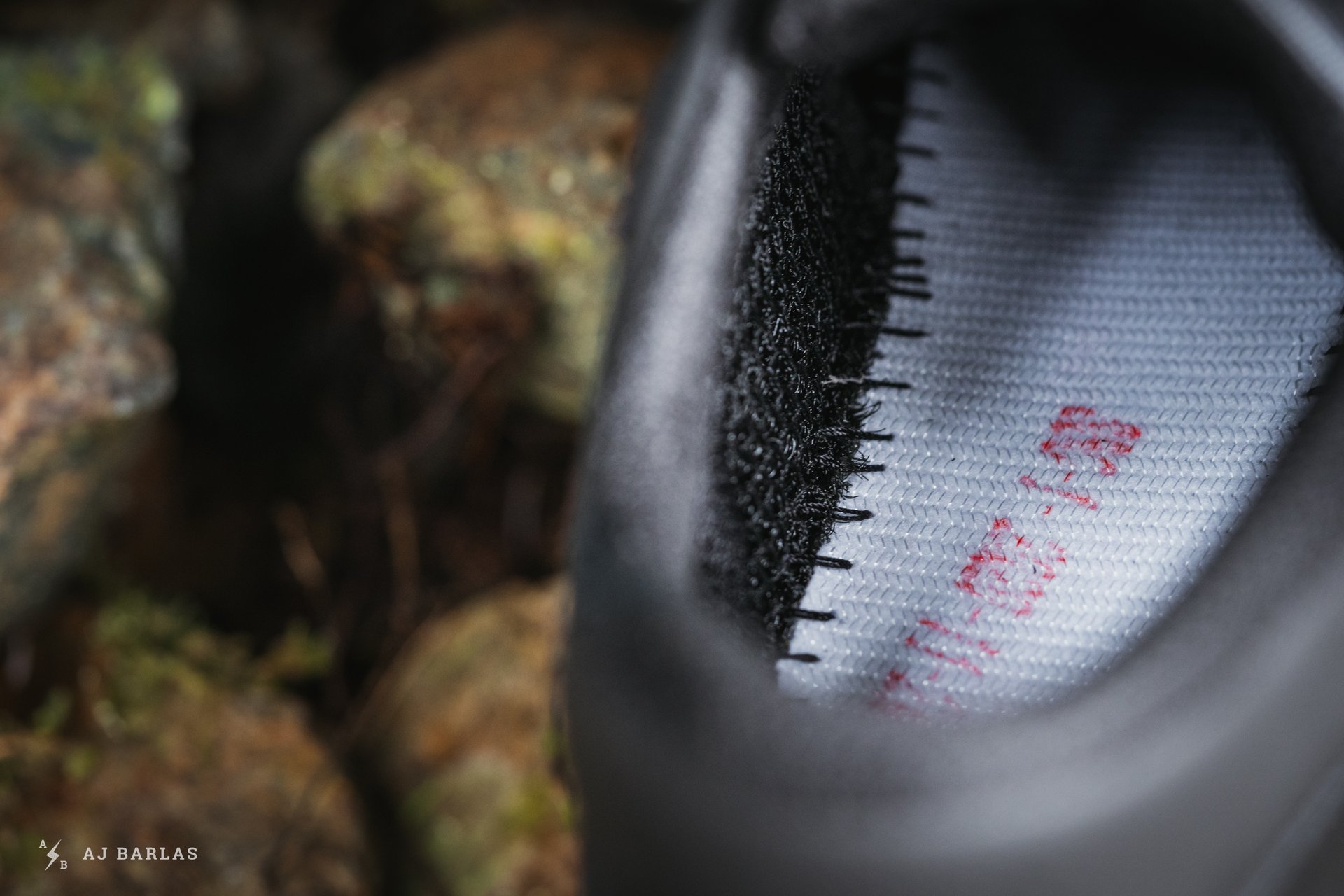
Early rides have shown the midsole of the shoe to strike a good balance of support and comfort. We'll see how it breaks in but the nylon shank results in a stiffer sole through the middle while being thinner than the FiveTen Impact Pro.
In addition to the shank in the 2FO DH Flat, Specialized has included the key components of their Body Geometry philosophy; the forefoot varus wedge, longitudinal arch support and a metatarsal button. As a rider with a high arch, I’ve noticed the benefits of elements of the system, particularly in their clip shoes.
With Specialized keen to strike a more casual appearance with the shoe, much of this tech is concealed. The footbed is their red, low-arch option (blue is average arch support and the green is high). These can be purchased separately for riders interested in a bit of fine-tuning.
Specialized worked with Xpel to create the footbed. Its appearance is interesting, with diamond shape cutouts throughout the bottom and perforations on the top to improve drainage. Limiting water absorption keeps the shoes lighter while riding — they already weigh ~200g less than the Impact Pro, per shoe —and they should dry more quickly post-ride. I haven’t been able to test this yet but from experiences with previous models, they should dry relatively quickly.
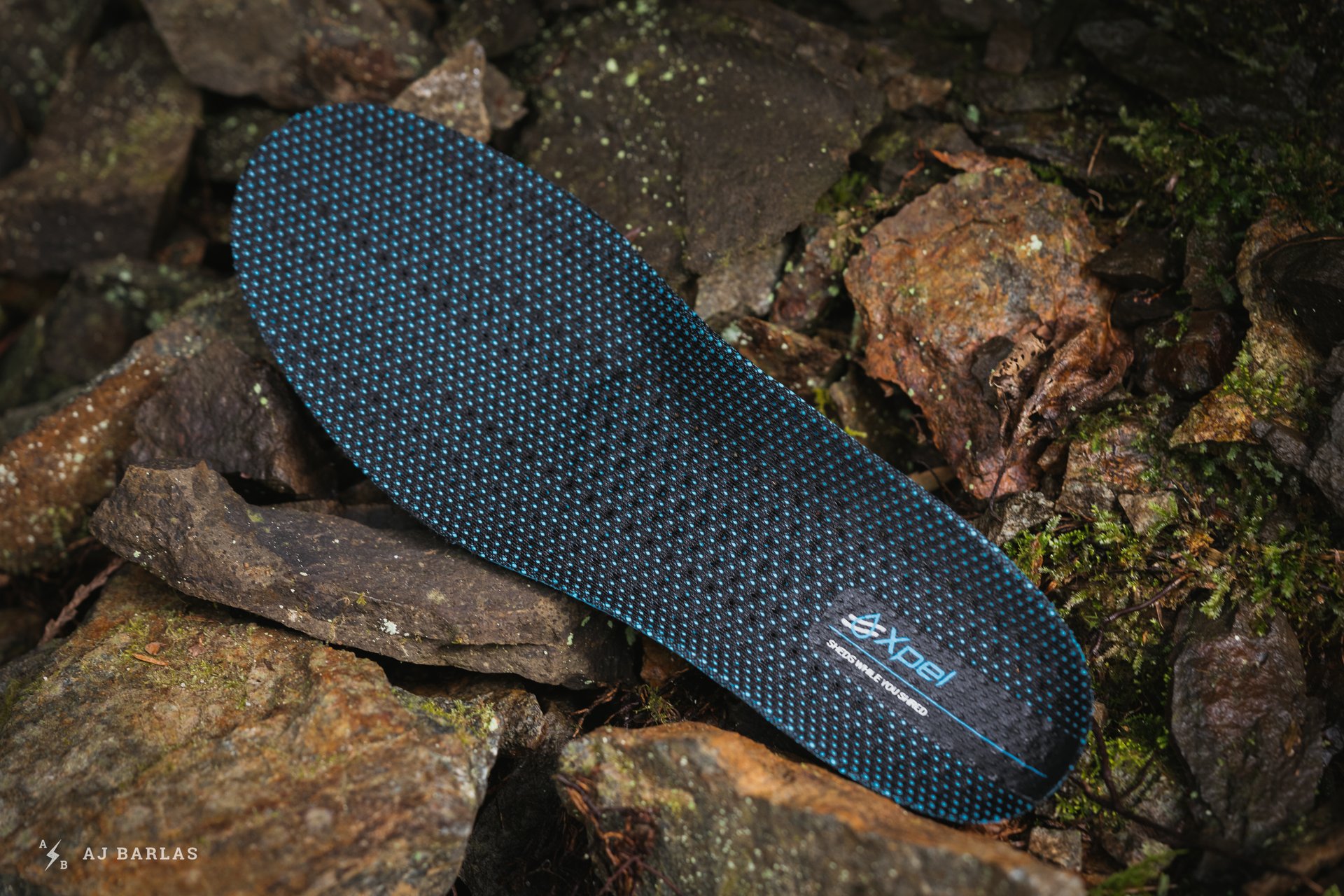
The Xpel footbed still features the Body Geometry system despite no bold announcements or logos. This is Specialized's low arch support shape.
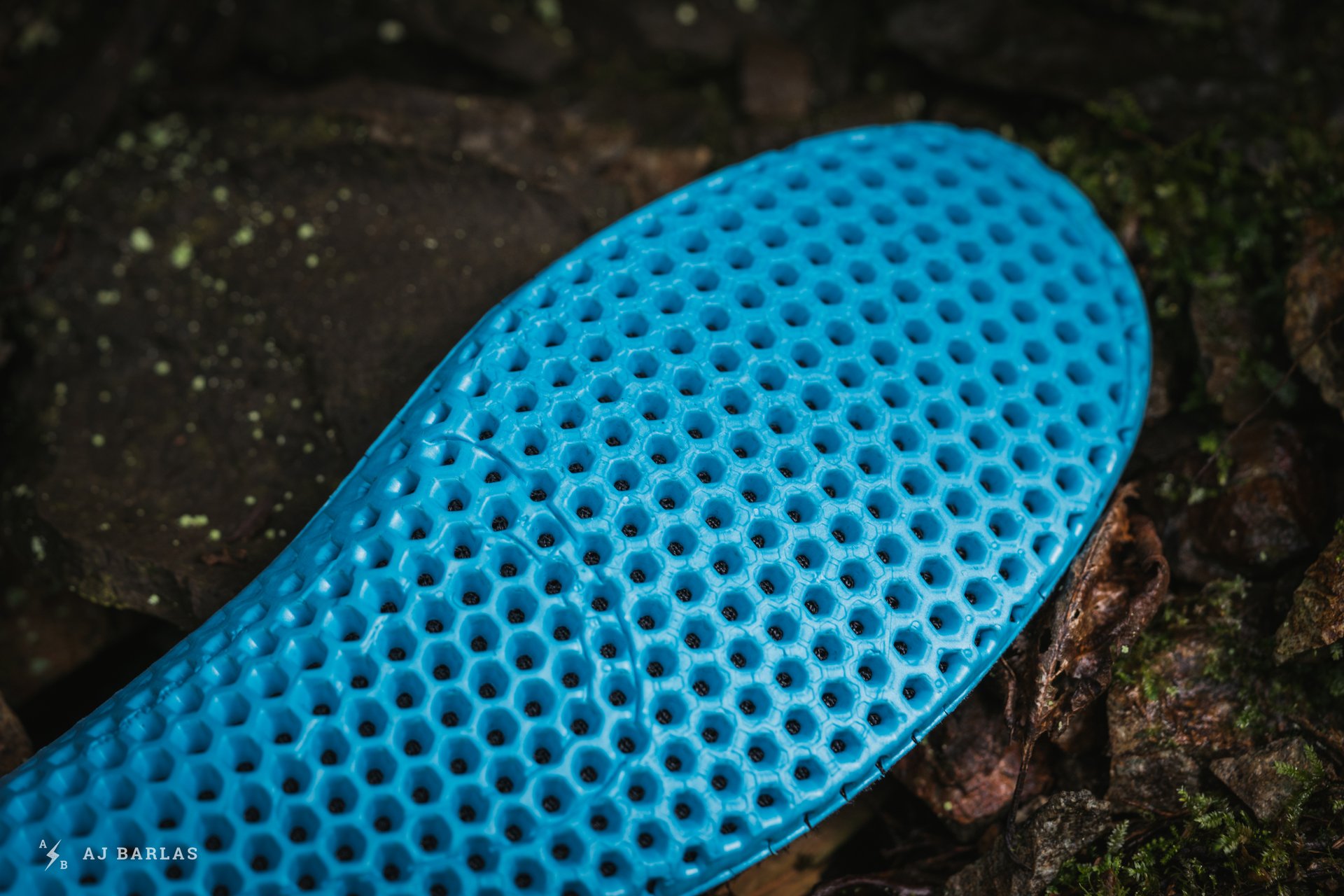
It features reliefs throughout that provide airflow and drainage. It would be interesting to see how these will break in but I've already moved to a higher arch support footbed.
Thanks to my high arch, the footbed in the 2FO DH Flat provided a loose feel and left me a bit disconnected. This may be a good thing for riders not interested in the claimed benefits of Body Geometry, with the shoe feeling similar to a regular Vans skate shoe. I still found grip to be excellent and overall enjoyed riding them but once I put my usual footbed in, things improved greatly. The shoe went from feeling loose with a less than ideal fit, to really good, improving response on the bike. The toe box of the shoe feels roomier than the Impact Pro or Freerider Pro shoes that I’ve been spending most of my time in, but the outer proportions are smaller.
The sole thickness and overall stiffness strike a good balance, however, after only a few rides I’m unsure how they’re going to feel once properly broken in. I’ve done a couple of mild walks around the neighbourhood and worn them around the house before riding, but I typically break in my shoes more. Despite this, these have felt good on the bike, albeit a bit stiff through the middle for my liking. Perhaps once they're properly broken in this will mellow out but if not, the Roost may be the better option for me. The sole feels thinner than the Impact Pro and is more similar to the Freerider Pro.
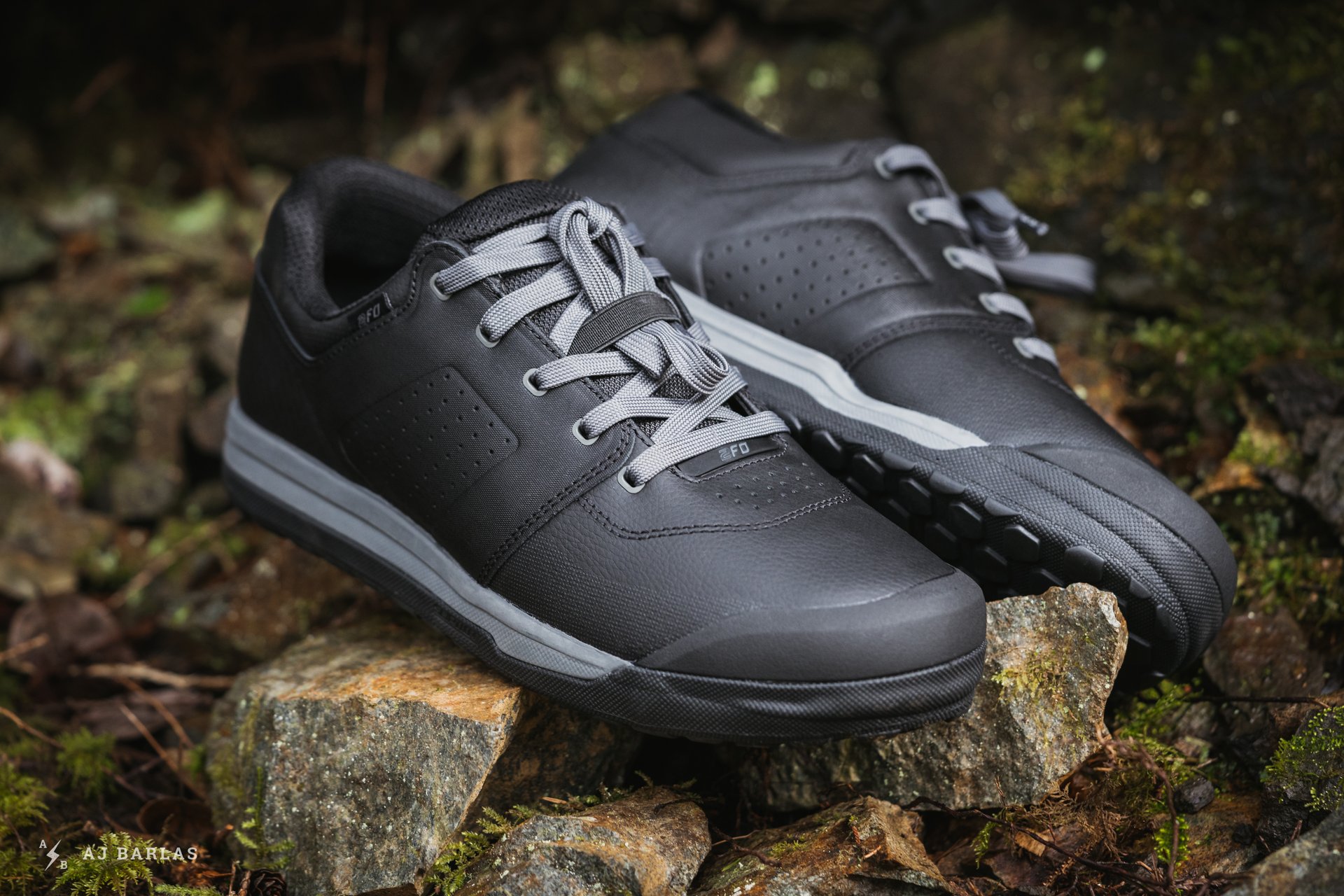
The shoe looks more casual but the materials are still harder wearing than the skate shoe appearance that Specialized has strived for.
Upper Materials
Specialized isn’t shy about its approach to the new 2FO DH shoe's casual aesthetic. One look at the shoe and it’s easy to see the similarities to the Roost, which is closer again in appearance to casual skate shoes. But there’s still plenty going on to help riders in a technical sense and it continues to the materials used in the uppers.
The appearance of the 2FO DH is where the similarities to the Roost end. The materials used carefully straddle street comfort and technical riding with some dating back to the first 2FOs. The sides of the shoe back to the heel are almost identical to Gen. 1 and are lightweight but relatively stiff. The Xpel hydrophobic mesh is found through the mid-section of the inside, allowing plenty of airflow but not much warmth in sub-10-degree C weather.
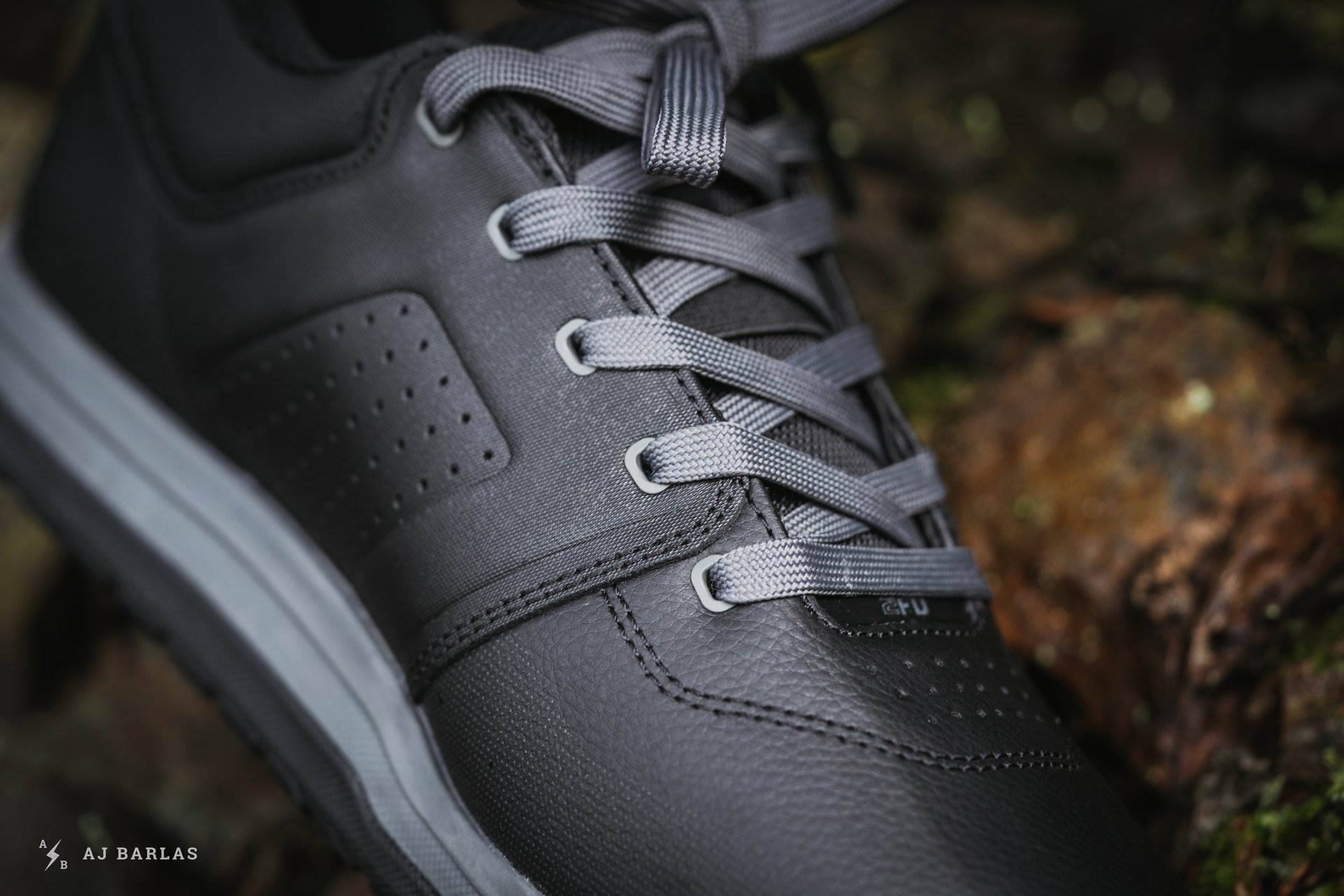
The lines are all quite similar to the recently released Roost but the materials are harder wearing.
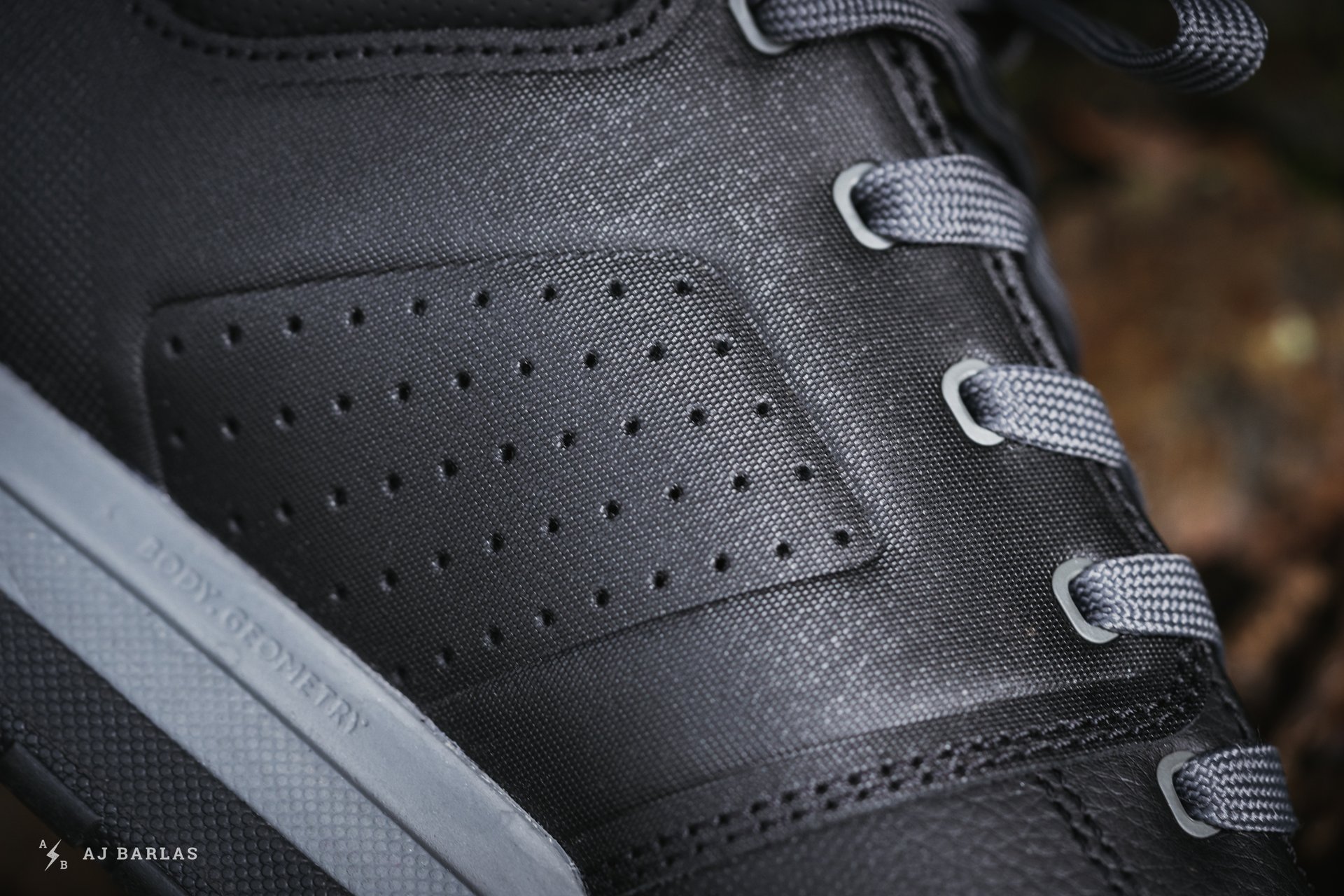
The mid section uses materials similar to the original 2FO. It's light, isn't affected much by water and is relatively stiff.
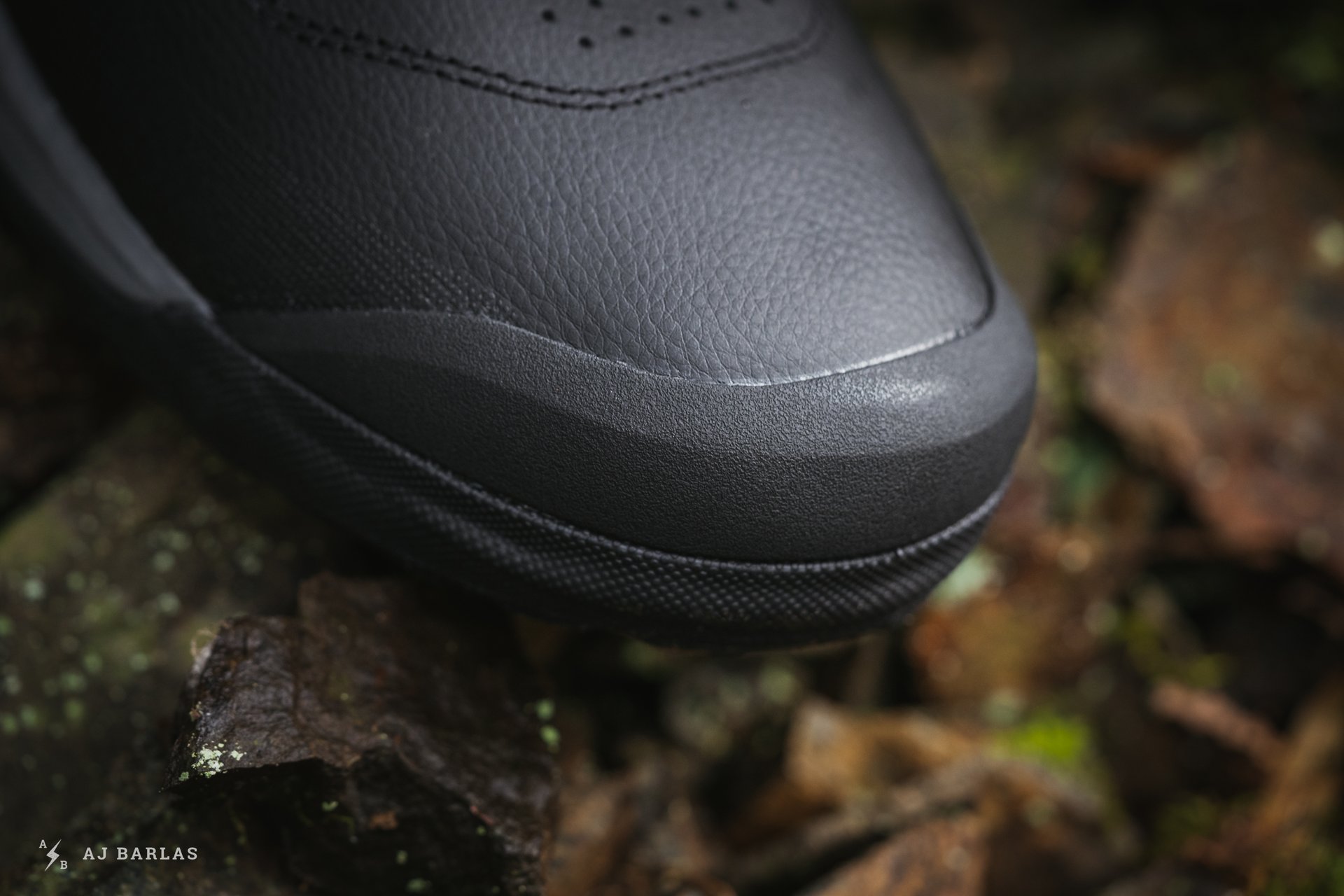
The 'vamp' (toe box) features a synthetic leather that's more comfortable than the original shoe but on par with Gen. 2. The toe cap is hard for protection.
The poured PU forefoot of the original 2FO is gone, as is the technical captured foam (mesh, foam, TPU all welded together) of Gen. 2, replaced with a more comfortable material. It still features a tough toe similar to Gen. 1 for protection but the vamp (top front of the shoe/'toe box’) features a synthetic material. This material is said to crease better, providing additional comfort when walking. Until comparing this with the original 2FO I wouldn’t have noticed it but it does feel good.
As with the Roost that Cam reviewed recently, the lace loops are slits to keep the flat lace from twisting. On the 2FO DH, the loops feature nylon-like material on the outside, reinforcing the loop. The upper half of the shoe is relatively easy to tighten but similar to Cam’s experience with the Roost, the shoe requires you to individually tug on each section to tighten evenly throughout.
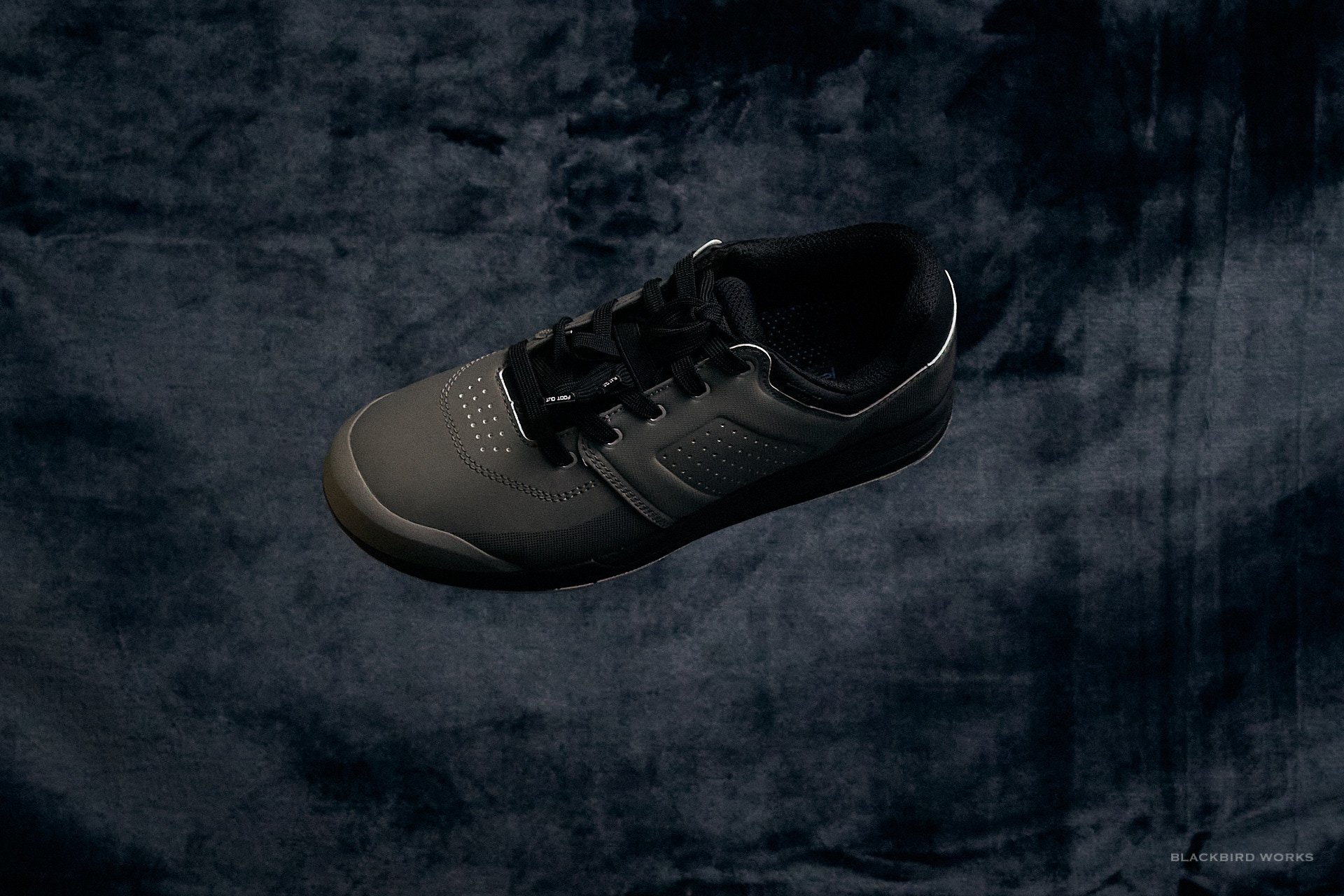
The 2FO DH Clip is back
The 2FO DH Clip Returns
Specialized has released a new 2FO DH Clip that shares many of the features of the Flat shoe. The appearance is almost identical but there are some different materials in use through the uppers while the greatest differences lay in the sole.
The sole uses Specialized's Lollipop shank; a three-quarter length injection nylon that provides mount locations for the T-nuts, while the rubber compound is SlipNot 2.0.
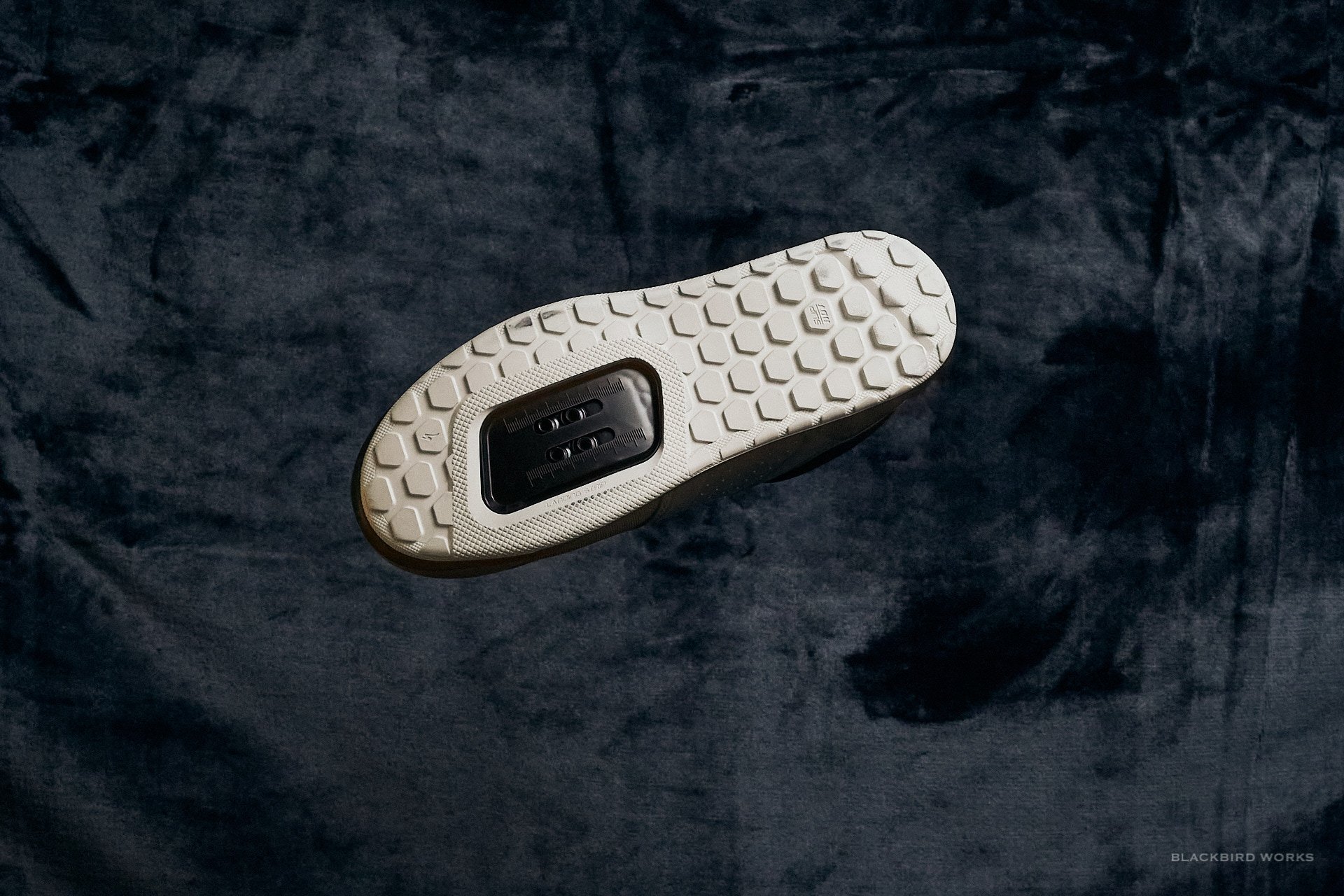
The clip shoe features a different, more durable and less grippy rubber sole, given the different needs from a clip shoe. Photo: Deniz Merdano
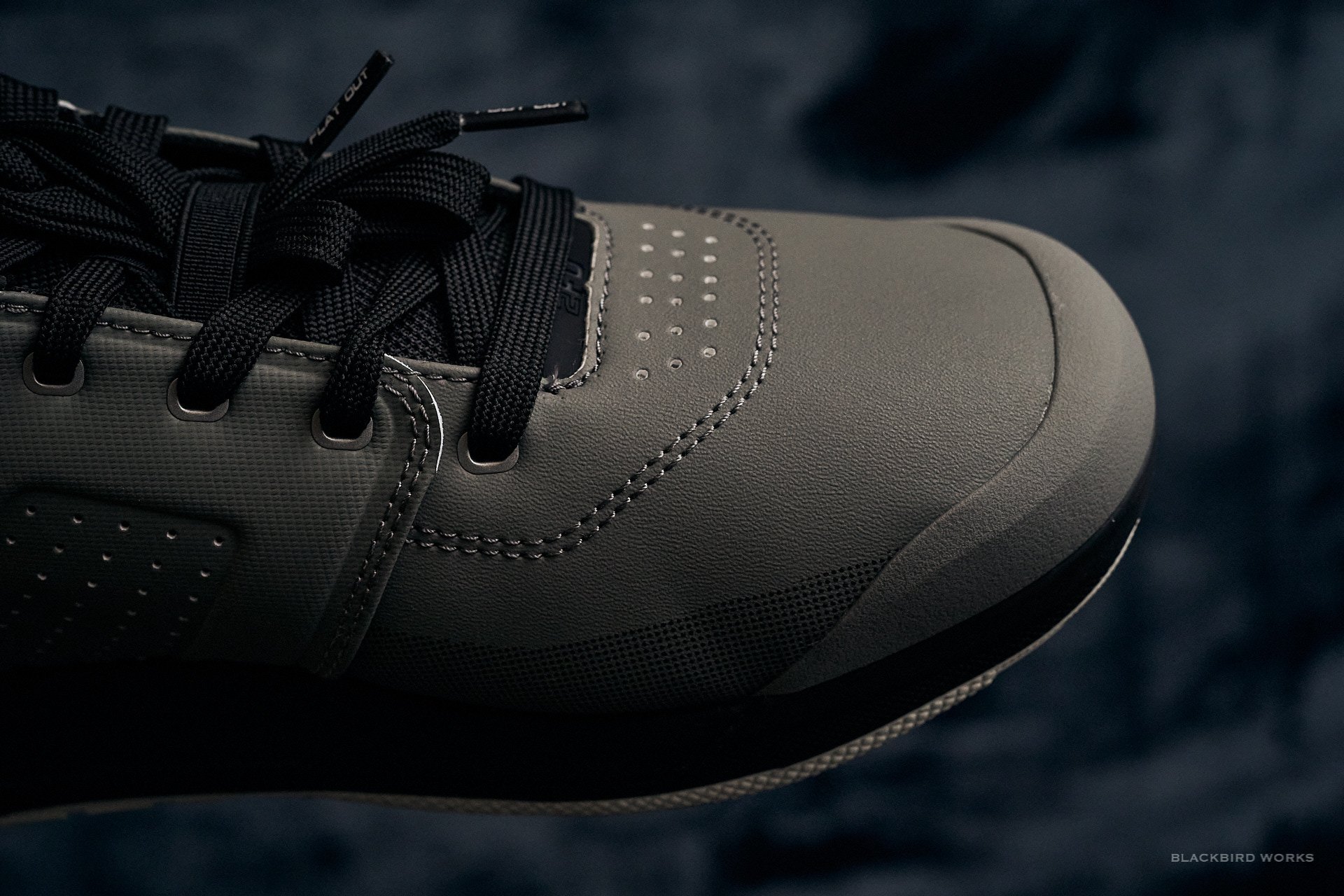
But many of the other features found on the flat version of the shoe are carried across to the new 2FO DH Clip. Photo: Deniz Merdano
The rubber sole prioritizes off-bike traction, abrasion durability and traction vs grip, like previous clip shoe models. Being mechanically connected to the pedal, grip from the rubber sole is less important and it needs to be durable enough to take the abuse of the pins, if any, being forced across the surface when untwisting to disconnect. Deniz has a pair that he’s testing so look for a review on them in the future.
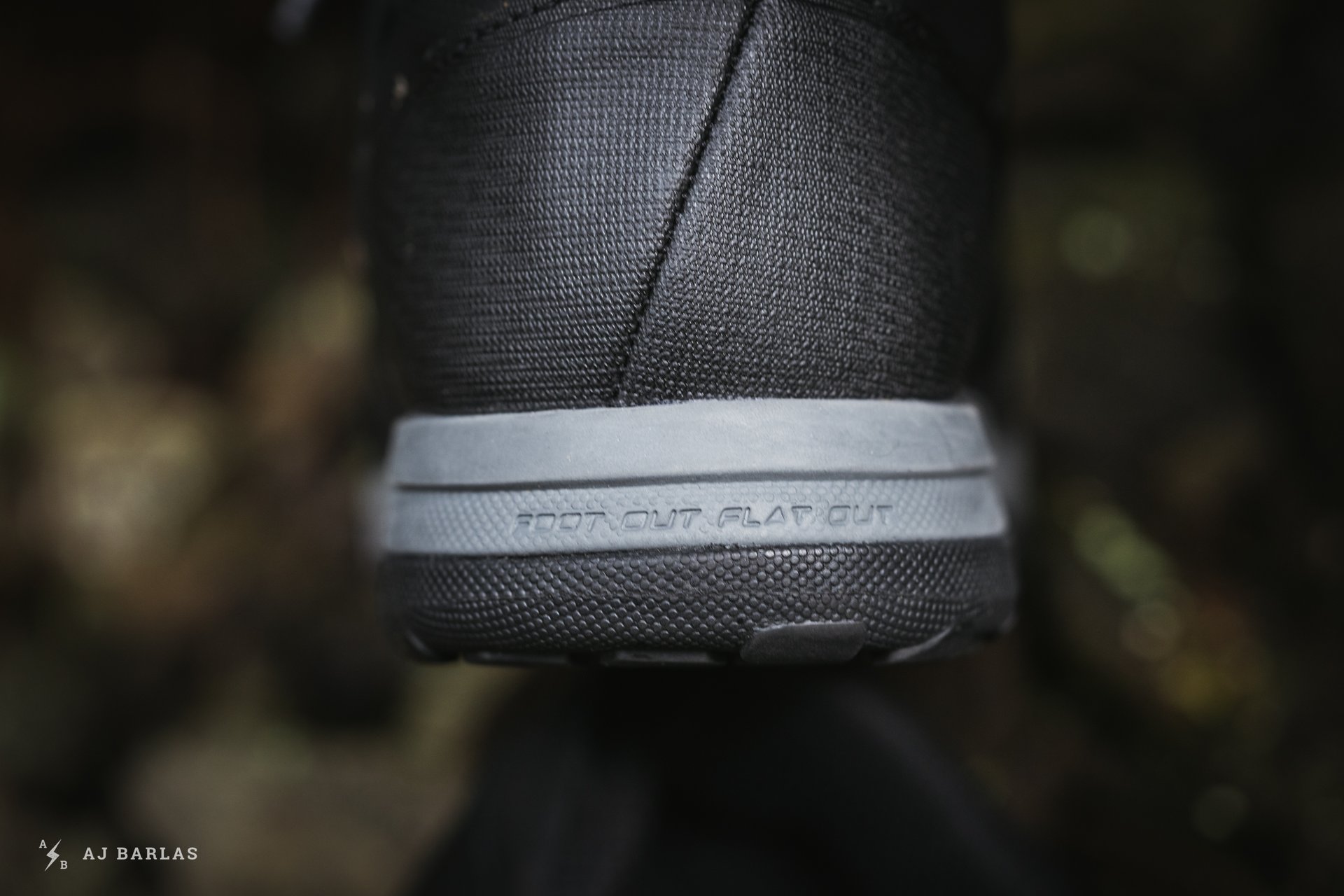
Gen. 1.0 took the Foot Out, Flat Out label a bit too literally. Things improved for Gen. 2 but the latest shoe and Specialized's SlipNot 3.0 has firmly placed them at the top of the max grip shoe pile, alongside FiveTen.
Impressing A Shoe Grip Snob
I couldn’t help but notice during my conversation with Footwear Project Manager, Stephen Quay, that they've done a sort of bracketing while striving for max grip. They surely would've preferred to nail that right away, which he confirmed was their goal all along, but before doing so they went from one extreme to the other. The first version had several interesting features but ultimately the rubber outsole was too firm to provide heaps of grip. The clip version of that first shoe was one of my favourites at the time. Then their journey took them to the other end, with one of the softest soles, and rubber I’ve ever experienced. It was comfortable to wear around town but struggled to provide adequate pin hold for the max grip crowd.
Now seven years after their first attempt, Specialized has pretty much nailed it, firmly planting their (sticky) foot in the ring. While it’s still early days, this shoe grip snob is having a fantastic experience with these shoes. SlipNot 3.0 produces a grip similar to my beloved FiveTens in a lighter package that promises to hold less water and increase breathability. The technical features of Specialized shoes carry over in a less boisterous manner, with a less technical appearance.
I’ll continue riding these as the weather warms, since they’re a tad cold in the winter conditions, and report back on anything notable, including comments on durability. Early impressions are positive, especially for riders interested in all the grip.
More on the Specialized 2FO DH shoes.
Age: 39
Height: 191cm/6’3"
Weight: 73kg/160lbs
Ape Index: 1.037
Inseam: 32”
Trail on Repeat: Changes as often as my mood.
Current Regular: Every test product spends time on Entrail
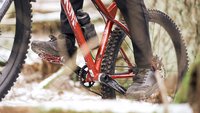

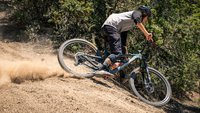








Comments
khai
3 years, 1 month ago
Looks like a promising option indeed. I agree with the above poster that some sort of lace management system (one that's better than the elastic loop) would be nice, though I suppose that's hard to achieve with the "casual" appearance they're after... I'll take well managed laces over looks better in a coffee shop any day.
Reply
Jerry Willows
3 years, 1 month ago
It would be nice to see a flap like Shimano for protection but everything Specialized makes is top notch these days.
Reply
AJ Barlas
3 years, 1 month ago
It’s not something I look for but I agree, there could be more options with it for flat pedal kicks.
Reply
Kenneth Douglas
3 years, 1 month ago
I would like to know how these compare to the 2FO Roost or, if you have experience with them, the Freerider Contact. My contacts didn't last that long, but I loved those shoes and haven't found a good replacement for them. I am currently running the Freerider Pro's, but they feel a little too stiff to me and I end up wanting more pedal feel through them. Do either of the 2FO DH or 2FO Roost feel like my much loved but horribly reliable Contacts?
Reply
AJ Barlas
3 years, 1 month ago
Hey Ken. It’s early but these are feeling more like the Freerider Pro currently. The Roost is softer, so you may prefer that? Cam has a review of the Roost you can check for more.
Reply
Kenneth Douglas
3 years, 1 month ago
Thanks for the info and pointing me to Cam's review, it was really informative. Somehow I missed it when it was first published.
Reply
tmoore
3 years, 1 month ago
They look really good, where are they made?
Reply
AJ Barlas
3 years, 1 month ago
The tongue says “Made in China.”
Reply
Pete Roggeman
3 years, 1 month ago
I can understand wanting to know where, but do we expect it to be anywhere other than China?
Reply
AJ Barlas
3 years, 1 month ago
I thought similar but had noticed a number of garments recently with “Made in Vietnam” on the tags. Are there any shoes made outside of Asia? Honestly curious.
Reply
Velocipedestrian
3 years, 1 month ago
Mckinley are... Oh, you meant for riding. As you were.
Reply
tmoore
3 years, 1 month ago
Where my money goes is important to me so I've done some research over the weekend. The Northwave Clan is made in Cambodia, the Unparallel Dustups are made in Korea. All of the other flats I might be interested in, including the Sidi Dimaro, are made in the land of the CCP. Uncle Dave and others liked the Clan, going to give them a go.
Reply
HollyBoni
3 years, 1 month ago
Switzerland.
Reply
ReductiMat
3 years, 1 month ago
Please get someone with a wide foot to report back on fit.
Reply
khai
3 years, 1 month ago
I'll volunteer to be NSMB's "duck footed" shoe tester!
Reply
Please log in to leave a comment.